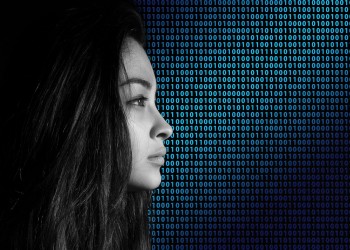Ever wonder what the difference between machine learning and artificial intelligence (AI) is? Or how deep learning differs from traditional AI solutions? Considering that we now have high-tech devices powerful enough to think like humans, these are timely questions to ask. Happily, the answers don’t require a supercomputer to decipher… even if we do now have access to computers that can solve complex problems, engage in conversation, or play board games with the skill of a natural-born human talent.
To keep things simple as we begin to consider the difference between machine learning and artificial intelligence, it helps to start by providing some simple definitions. Artificial intelligence essentially refers to the ability of a high-tech or computerized device to think like a human. AI software routines and systems effectively bestow what appears to be the gift of logic, memory, and decision-making on these devices. For example, when using them, video games can offer you a lifelike virtual opponent to face off against, speech recognition systems can predict the answer to questions you vocalize, and self-driving cars can speed you safely to destinations. Today, artificial intelligence routines are increasingly being found in an ever-growing array of consumer electronics from talking Bluetooth speakers and smartphones to wearable technology of every sort. You can expect this trend to continue in coming years – devices will only get smarter going forward.
Machine learning, on the other hand, is a specific type of AI which allows a piece of software to learn on its own. For instance, the more data a mobile analytics software package consumes, the better it might get at predicting the ebbs and flows of market or consumer behavior. Similarly, the more you use a smart home thermostat or lighting control system, the better it might get at predicting what temperature or lighting conditions you’d like present at specific times of day without being asked. In effect, devices that engage in machine learning behavior don’t need the help of a programmer to grow and expand their knowledge base, or improve their performance. Rather, these high-tech wonders can actually do so on their own, and typically only get smarter and better over time, the more they’re used.
Once you’ve got the basic difference between machine learning and artificial intelligence down, it becomes far easier to comprehend other, related terms. For instance, deep learning – a type of machine learning that enables devices to process huge amounts of data much faster, more accurately, and more appropriately in context. In effect, it helps train these high-tech solutions to become far more adept at spotting objects and patterns, recognizing and responding to requests, and making good decisions. From image recognition software packages to speech translation tools, machine learning can be found in a surprising variety of places. As you might imagine, with more and more fields from life sciences to data processing and cloud application development looking to machine learning capabilities, you can also count on it seeing pop up more often in tomorrow’s solutions.
While the difference between machine learning and artificial intelligence and other related terms such as cognitive computing isn’t always apparent at first, remember. It’s not all that difficult to decipher once you’ve familiarized yourself with some straightforward information which any market leader with an interest in mobile business should be aware of. You may wish to make a point to familiarize yourself with ongoing developments in the field as well – they’re sure to make considerable impacts on the marketplace in 2020 and beyond.














